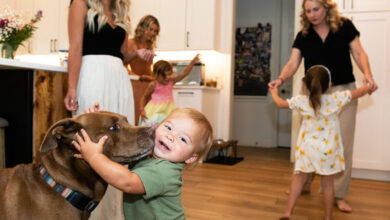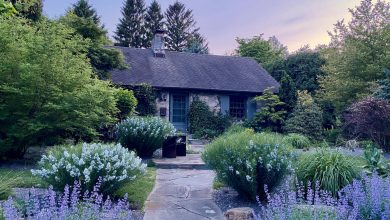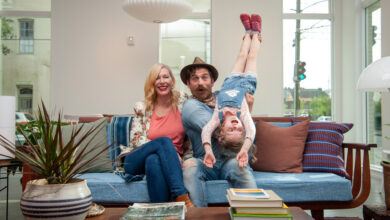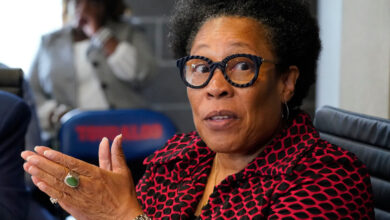For a Brooklyn Heights Townhouse, a Divine Reinvention
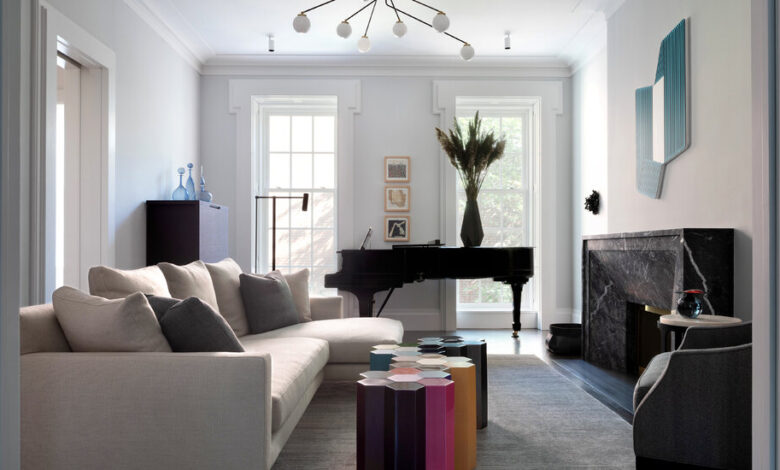
[ad_1]
When Steven Holley found his 1834 Greek Revival townhouse in Brooklyn Heights, it seemed almost like divine intervention.
“It had been owned by the Roman Catholic Church for about a hundred years, and the Franciscan Sisters of the Poor had been living there since 1969,” said Mr. Holley, 63, a partner at the law firm Sullivan & Cromwell.
Beaten up, stripped of many period details and cut into a warren of tiny rooms, the townhouse was ready for a complete overhaul — exactly the kind of project he wanted.
“I went with my friend Sharon to look at the place one Saturday morning, after the nuns had moved back to Rome,” he said. “There was a dreamcatcher on a door and a rock carved with the word ‘hope,’ and she said, ‘Oh my God, the nuns’ hopes and dreams are still here.’”
Chasing his own dream of an immaculate townhouse, Mr. Holley signed a contract to buy the property for about $5.5 million in March 2015, then waited for approval from the Holy See in the Vatican before closing on the property that July.
There was just one provision in the deed that gave him pause. “It says that the house cannot be used to perform or promote abortion, euthanasia or paid pornographic performance,” he said.
As a lawyer, he was wary of such an unusual add-on. “I didn’t want to sign this, but then somebody said to me, ‘Well, what difference does it make?’” he said. “And, of course, what judge in Brooklyn is ever going to enforce such a crazy provision?”
He proceeded with the purchase and hired Deborah Berke Partners, the architecture firm that designed his beach house in Quogue, N.Y., to help restore the home to its former glory while updating the interior to reflect 21st-century living.
The project represented a significant departure from Mr. Holley’s previous primary home, a 4,000-square-foot loft near Union Square that had been renovated by Hanrahan Meyers Architects in the 1990s, in a style so spare and open — with only glass walls between rooms — that it was featured in “The Un-Private House,” a 1999 exhibition at the Museum of Modern Art.
In Brooklyn Heights, Mr. Holley looked forward to living in a quieter neighborhood, and in a home with softer touches and historic details. Deborah Berke Partners developed a plan to restore the red-brick building, which is in a historic district, to its original design on the exterior, while building a small addition on the roof that is set back from the front facade so it can’t be seen from the street. Inside, the architects aimed to strip everything down to the studs and joists, including removing the old staircase, to start fresh.
“With these townhouses, one tends to feel a little reverential,” said Arthi Krishnamoorthy, the lead partner on the project. “But in this case, because of the house’s pre-renovated state, and it having been cut up into small rooms, we felt at liberty to rethink it from first principles, and perhaps even make it more like its original self. That’s not to say we did a historicist replica of what might have been there. We developed an architectural language that was rooted in the Greek Revival style, but has a real crisp and contemporary take to it.”
Details include muscular crown molding, wall paneling, window and door casings, and built-in shutters, all with simple, sharp-edged profiles that walk a fine line between traditional and modern. A new staircase with a sinuous black handrail slides up through the home’s four stories. Fireplace mantels are adorned with thick monumental slabs of Grigio Carnico marble, and walls are coated in calming shades of gray, tan and blue.
On the roof, the architects created two outdoor spaces — a terrace immediately off the den and a deck one story higher — with views of Lower Manhattan and the Statue of Liberty.
Yet there was one obstacle that threatened to derail the project: Even after navigating the complexities of buying property from the Roman Catholic Church, Mr. Holley wasn’t fully prepared for dealing with New York City’s Department of Buildings.
“The upper floor became a mini war,” he said, when the department questioned whether the existing attic bedrooms were habitable space that could be renovated. The disagreement delayed construction by about a year, he said, but his design team finally prevailed after combing through microfiche to find plans for the house from the early 20th century, which showed the attic as habitable space.
Construction finally began in February 2017, and the 4,900-square-foot reimagined townhouse was complete in June 2019, at a cost of about $750 a square foot.
Through it all, Mr. Holley, who has long had an interest in art, architecture and design, relished hashing out the smallest details, from the kitchen cabinets to the paint colors.
“I actually thought about being an architect and went to architecture school for one semester, but wasn’t really sure I wanted to spend my life doing plumbing details,” he said. “I’m a very active client.”
Ms. Krishnamoorthy said that hands-on involvement led to a better result. “This is a combined vision,” she said. “I think the art, the architecture and the furnishings all come together symphonically.” And the song the townhouse sings no longer seems inspired by a hymnal.
For weekly email updates on residential real estate news, sign up here. Follow us on Twitter: @nytrealestate.
[ad_2]
Source link


